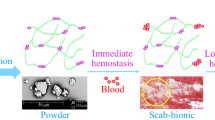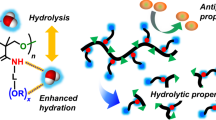Abstract
CONSIDERABLE efforts are being made to understand better the interaction of blood with synthetic as well as natural surfaces and to develop materials that are compatible with blood1–5. The compatibility of blood with surfaces has been associated chiefly with ionic charges based on the observations that the endothelial wall, the platelets and the plasma proteins carry net anionic charges in normal physiological conditions6. The possible role of electronic conduction and semiconduction in blood compatibility, by contrast with mere ionic interactions, has not, however, been demonstrated before. I describe here observations in support of such a role.
This is a preview of subscription content, access via your institution
Access options
Subscribe to this journal
Receive 51 print issues and online access
$199.00 per year
only $3.90 per issue
Buy this article
- Purchase on Springer Link
- Instant access to full article PDF
Prices may be subject to local taxes which are calculated during checkout
Similar content being viewed by others
References
Bruck, S. D., J. Biomed. Mater. Res., 6, 173 (1972).
Bruck, S. D., Trans. Amer. Soc. Artif. Intern. Organs, 18, 1 (1972).
Bruck, S. D., Biomat., Med. Dev., Art. Org., 1, 79 (1973).
Foster, E. D., Smith, M. R., and Dobell, A. R. C., Can. J. Surg., 15, 339 (1972).
Salzman, E. W., Blood, 38, 509 (1971).
Sawyer, P. N., and Pate, J. W., Amer. J. Physiol., 175, 103 (1953).
Szent-Györgyi, A., Nature, 157, 875 (1946).
Szent-Györgyi, A., Bioenergetics (Academic, New York, 1957).
Evans, M. G., and Gergely, J., Biochim. Biophys. Acta, 3, 188 (1949).
Eley, D. D., Parfitt, G. D., Perry, M. J., and Taysum, D. H., Trans. Faraday Soc., 49, 79 (1953).
Taylor, B. C., Sharp, W. V., Wright, J. I., Ewing, K. L., and Wilson, C. L., Trans. Amer. Soc. Artif. Intern. Organs, 17, 22 (1971).
Bruck, S. D., Polymer, 6, 319 (1965).
Bruck, S. D., J. Polymer Sci., Part C, 17, 169 (1967).
Bruck, S. D., Ind. Eng. Chem., 59, 18 (1967).
Bruck, S. D., Polymeric Organic Semiconductor, US Patent No. 3,362,917 (January 9, 1968).
Bruck, S. D., Polymeric Organic Semiconductor, Canadian Patent No. 764,338 (August 1, 1967).
Bruck, S. D., J. Polymer Sci., part A-1, 8, 771 (1970).
Frankel, S., Reitman, S., and Sonnenwirth, A. C. (eds.), Gradwohl's Clinical Laboratory Methods and Diagnosis, 1 (Mosby, Saint Louis, 1970).
Packham, M. A., Warrior, E. S., Glynn, M. F., Senyi, A. S., and Mustard, J. F., J. Exp. Med., 126, 171 (1967).
Author information
Authors and Affiliations
Rights and permissions
About this article
Cite this article
BRUCK, S. Intrinsic Semiconduction, Electronic Conduction of Polymers and Blood Compatibility. Nature 243, 416–417 (1973). https://doi.org/10.1038/243416a0
Received:
Revised:
Issue Date:
DOI: https://doi.org/10.1038/243416a0
This article is cited by
-
Selected topics in biomedical polyurethanes. A review
Colloid & Polymer Science (1989)
Comments
By submitting a comment you agree to abide by our Terms and Community Guidelines. If you find something abusive or that does not comply with our terms or guidelines please flag it as inappropriate.



